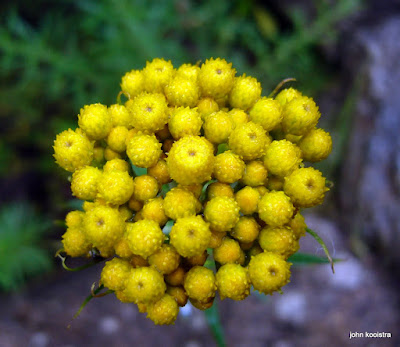A selection of photos of some of the birds that live in the patchy bushland and coastal scrub around Horrocks WA, where we are currently living and working. I have compiled a list of over 80 species within a 5 km radius of the town, of which well over half have been observed in the aforementioned habitats, with many of these around the caravan park.
 |
| View of Horrocks from escarpment with caravan park at centre |
A pair of Little Eagles perch in the gums in the van park occasionally, but are generally seen soaring along the edge of the limestone escarpment behind town. Nine species of raptor frequent the area, so there's plenty of tucker around, including the wild rabbits that we sometimes see scampering off into the scrub.
 |
| Little Eagle |
 |
A pair of Kingfishers are making their presence known with their monotonous contact calls and swift, direct flights to pick up prey from the ground.
 |
| Sacred Kingfisher |
Tree Martins abound with many nesting in under the eaves of some of the holiday houses, although tree hollows would be their natural preference. They also like to feed along the shoreline, a joy to watch with their aerial antics.
 |
| Tree Martins |
The one below was taking advantage of a sprinkler to cool off a bit.
 |
| Tree Martin |
Conversely these swallows were welcoming the midday sun along the back of a shed. I have seen this "sunning" behavior before in other birds such as doves and magpies and of course cormorants.
An interesting article on this phenomenon here: http://birdlife.org.au/australian-birdlife/detail/sunny-side-up
 |
| Welcome Swallow |
I've noticed a distinct lack of parrots and cockatoos, with only two species prevalent here, Australian Ringneck, with a small group around the van park and the sporadic flocks of Galahs flying by. Probably because of the paucity of nesting hollows, with much of the native vegetation long ago removed for wheat and sheep farming.
 |
| Australian Ringneck |
A very common, introduced species around the park and surrounding coastal scrub is the Laughing Dove with its somnolent chuckling call, a lovely sound that can put you in the mood for an afternoon nap.
 |
| Laughing Doves |
Singing Honeyeaters are constantly on the move, and like many of their family do not need to rely solely on flowering plants to get by, with insects making up a large part of their diets.
 |
| Singing Honeyeater |
Their feisty cousins the White-plumed Honeyeaters rule the roost in the park, with this specimen one of a number of young birds constantly begging to be fed.
I was pleased to come across a lifer while exploring some thick creek side scrub, one of the Petroicidae family, and this one being unique to Western Australia. It was quite shy compared to it's relative and one of my favourites, the Eastern Yellow Robin. As we continue our travels early next year I hope to find a few more endemics in the south west of this huge state, including the Western Yellow Robin.
 |
| White-breasted Robin |
While checking out some Aboriginal rock art at Willy Gully caves, we spotted this Pardalote using an abandoned Fairy Martins mud nest to rear its own young.
 |
| Striated Pardalote |
 |
| Willy Gully Caves rock art |
A couple of Fairy-wren species also utilize the abundant coastal vegetation around Horrocks with the White-winged version preferring the low lying, salt tolerant plants closer to the beach.
 |
| White-winged Fairy-wren - male |
And the Variegated liking the taller, thicker scrub along the dunes and escarpment.
 |
| Variegated Fairy-wren - female |
A link here to a previous post on my experiences with these beautiful little birds in WA:
Cheers and Happy Birding




























